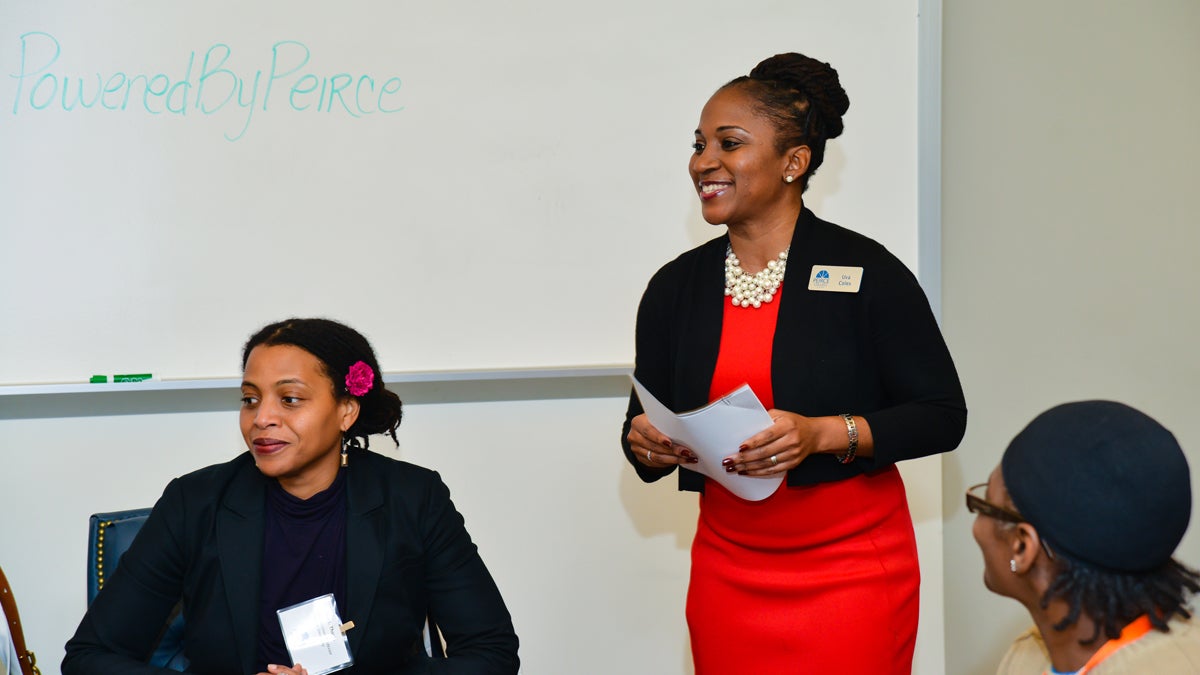Untangling what black women’s ‘rebellious’ hair says about identity at work

In February
Work-life balance is usually about parsing out workplace and personal time. But for many African-American women, it also includes something that is often overlooked by managers, but which goes to the core of identity: their hair.
Uva Coles, vice president of institutional advancement and strategic partnership at Peirce College in Philadelphia, has spent a lot of time preparing students for career moves, from resumes and cover letters, to which jobs to apply for and how to dress for interviews. She has also observed the need among many students for more nuanced conversations around the deeper issue of identity.
“Professionalism is professionalism,” she says. “But when you really listen, we recognize in some cases, hair style is less about image, more about identity.”
For Black History Month, Coles helped assemble a February panel discussion called “Your Hair, Your Image & Your Career Climb” to create the safe space she thinks Peirce students need. Seventy percent of Peirce students are African-American, the average age is 36, and many are first-generation college students.
Blend in or stand out?
“For African-American traditional hairstyles, there’s a history of your hair telling you something about you,” Coles says. “You decide for yourself what you’re willing to adjust for that first job. … For some students, if you have natural hair, and you’re not used to seeing it in the workplace, it becomes a conflict. Am I able to bring my full self to the work environment? And if not, how do I adjust? And what does that say about me? In an environment that I may not be used to, I want to hold on to who I am. I want to navigate in a way that doesn’t ask me to compromise who I am.”
The topic had been part of her conversations with students, but she was surprised by the degree to which the forum showed how much people need to talk about it in community. “We knew the conversation really wasn’t about hair, though we presented it that way,” she says. “A person of color going into an environment that may not be very normalized or diverse may think, ‘I’m already worried about standing out. Do I blend in, or do I use my image as a way to stand out?'”
It might seem that, even if the workplace presents a challenge for women and their hair, the home space would always be embracing, but depending on the family background, she says, some women have to negotiate there as well. “We have to pivot and think about what our hair says in our own families and communities. One woman kept it natural in the workplace, but when she went home, the acceptance wasn’t there. How do I embrace it in the workplace but then go home where my family doesn’t experience this as I do?”
And the conversation is happening across the diaspora, Coles says. She recalls ones woman from the Republic of Panama whose family was uncomfortable with her choice to wear her hair naturally. “In so many places, you sit at the kitchen table and your mother or grandmother tells you what you need to do. You just learn it’s what you need to do.”
Breaking barriers internally and externally
Coles’ own hair story has given her the insights she shares with the students. “For many years, I put chemicals in my hair to relax it,” she says. “For many of us, it becomes a rite of passage, that when you get to a certain age, to be more presentable, you have to adjust your hair to fit what is mainstream. For me, it was age 13, though I realize now parents are doing this with kids from about age 8 or 9. Our hair is coiled and rebellious.”
It wasn’t until she was in her 30s that Coles realized she was making adjustments that were counter to how she identified instinctively. “I wanted to be true to who I am,” she says, “so I made a decision to cut my hair and allow it to be natural, to embrace who I am and be comfortable in my skin. It came with a cost. I was told in other [work] environments that my hairstyle was not ideal.”
Coles learned to weigh experience and risk. “Early in my career, … I made adjustments,” she says. “But the older I’ve gotten, the more I’ve built my resume, and the more my work speaks for itself, the more comfortable I am presenting myself as I am. So wearing my hair locked is comfortable for me. I’ve been in spaces that welcome all of me. Peirce is one of those places that lets me walk in with locked hair. So when I come to work I don’t have to worry about what my hair looks like or if it can present barriers. I can suspend the conversation of identity on a daily basis and focus on the work. People tend to engage the inner conversation about my hair, and I welcome that. It’s been an opportunity to teach what I’ve learned over time.”
How identity on the job affects performance on the job is a compelling connection.
“Organizations think about diversity,” Coles says. “But there’s a difference between diversity and inclusion. Having people who think differently is the easy piece …. Diversity introduces conflict because of differences.”
But Coles takes it a step further. “To create an environment of inclusion — that’s the hard work. Not just tolerance, but better understanding your colleagues. That’s inclusion at work. If you as an organization put resources forth to create that space for learning, your work becomes richer, fully productive.
“Some companies don’t realize the full breadth of what inclusion means and why it matters. Individuals need to feel they are valued, that who they are matters to the organization. Instead of worrying about whether I can show up as I am, I can focus on the work of the day.”
The core question, she says, is how we optimize diversity in our various work environments so we can become more productive. “When you have more voices at the table, your company becomes stronger, your workforce feels more valued.”
WHYY is your source for fact-based, in-depth journalism and information. As a nonprofit organization, we rely on financial support from readers like you. Please give today.




